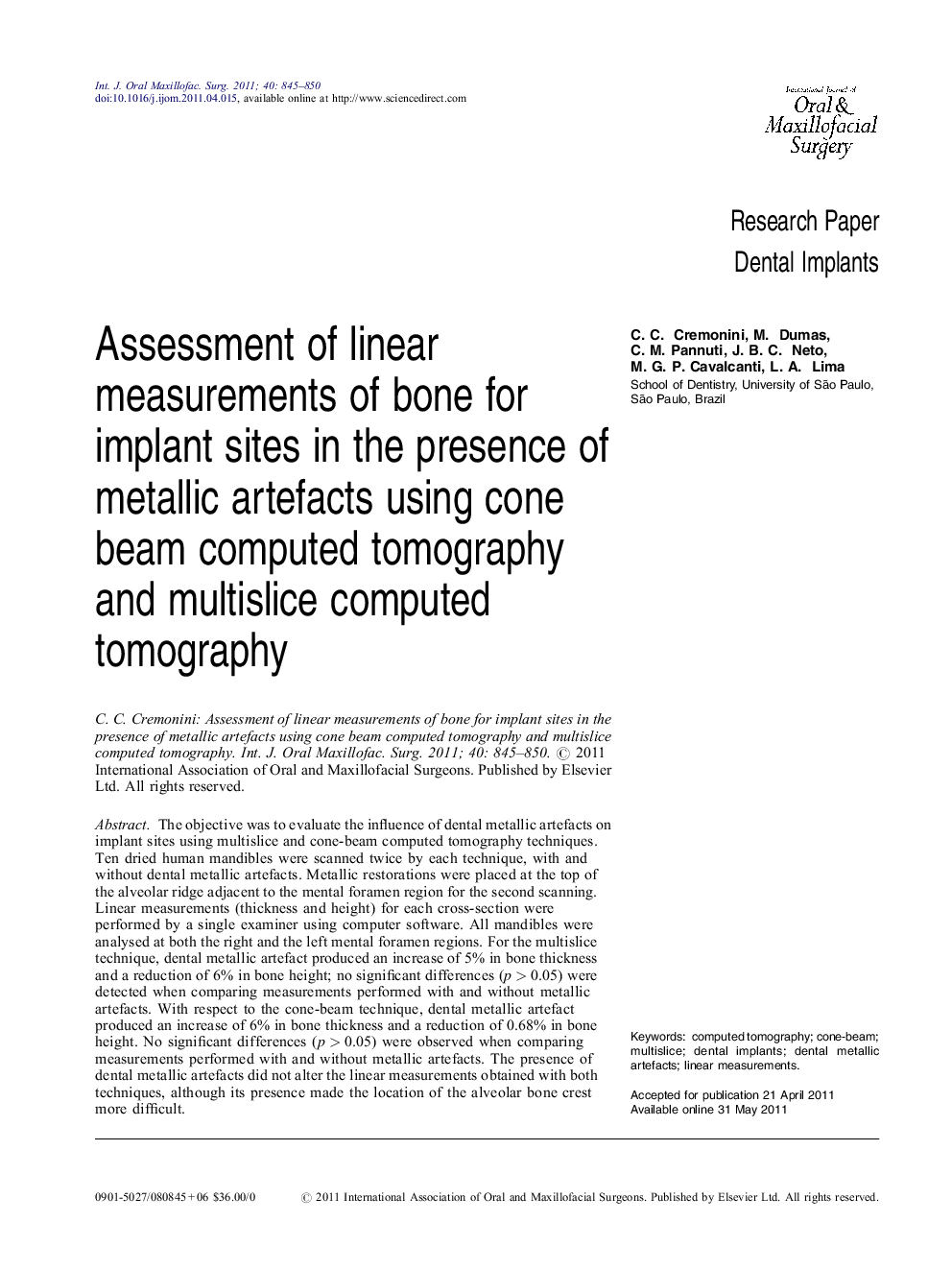| Article ID | Journal | Published Year | Pages | File Type |
|---|---|---|---|---|
| 3133870 | International Journal of Oral and Maxillofacial Surgery | 2011 | 6 Pages |
The objective was to evaluate the influence of dental metallic artefacts on implant sites using multislice and cone-beam computed tomography techniques. Ten dried human mandibles were scanned twice by each technique, with and without dental metallic artefacts. Metallic restorations were placed at the top of the alveolar ridge adjacent to the mental foramen region for the second scanning. Linear measurements (thickness and height) for each cross-section were performed by a single examiner using computer software. All mandibles were analysed at both the right and the left mental foramen regions. For the multislice technique, dental metallic artefact produced an increase of 5% in bone thickness and a reduction of 6% in bone height; no significant differences (p > 0.05) were detected when comparing measurements performed with and without metallic artefacts. With respect to the cone-beam technique, dental metallic artefact produced an increase of 6% in bone thickness and a reduction of 0.68% in bone height. No significant differences (p > 0.05) were observed when comparing measurements performed with and without metallic artefacts. The presence of dental metallic artefacts did not alter the linear measurements obtained with both techniques, although its presence made the location of the alveolar bone crest more difficult.
